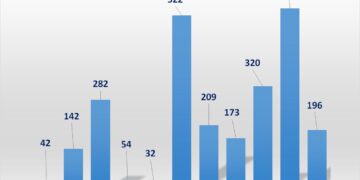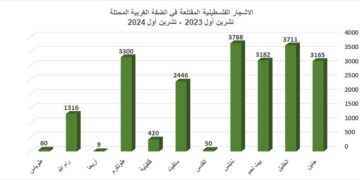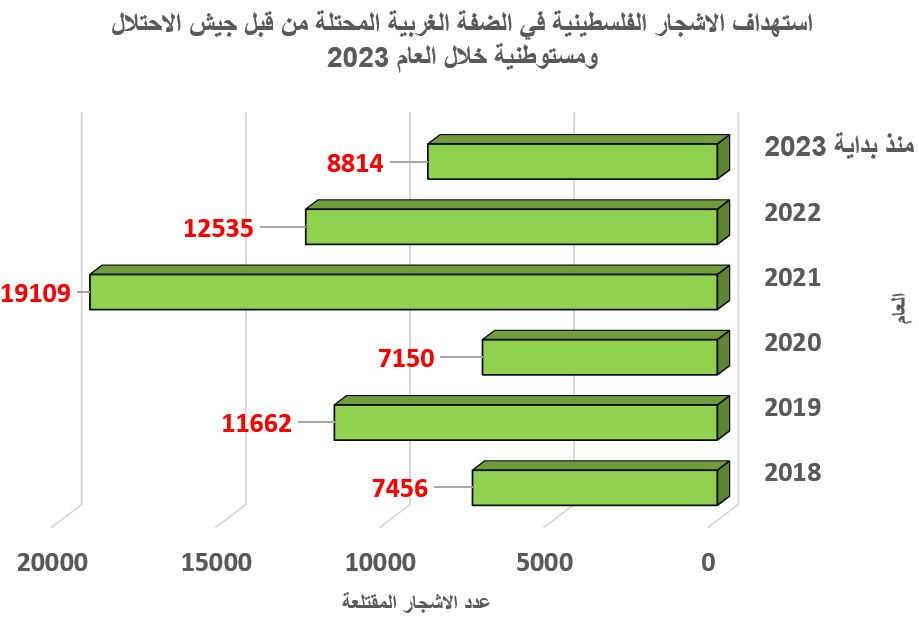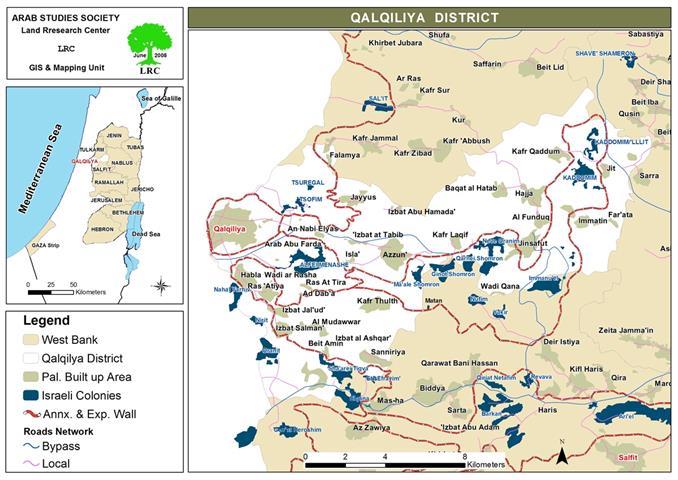Israeli bulldozers began to devastate large area of agricultural land in Beit Hanina At tihta (lower Beit Hanina) north west of the city of Jerusalem to make room for the construction of new sections of the Segregation Wall.
In the morning hours of June 23rd, 2008, Israeli Bulldozers arrived in Az Zawiya area near Wadi Lifta accompanied by a large army force who announced the whole area as a closed military zone to prevent the village residents and land owners from reaching the scene. However, many residents and land owners forced their way towards the Israeli bulldozers in an attempt to force them out of the area, but fierce clashes erupted between them and the Israeli soldiers during which a number of protesters were injured with rubber bullets or tear gas, including the head of the village council, Mr. Ahmad An Jar who suffers from a heart attack.

Photo 1: Beit Hanina at Tihta: An Israeli bighammer starting to devastate agricultural land in)
Photo 2 : Beit Hanina at Tihta: Like elsewhere, land devastation
is done under official army protection
The target land is cultivated with more than 500 long-lived olive trees of Roman species. These developments took place following the issuance in May, 2008, of a new Israeli military decree ordering the confiscation of 5500 dunums from the village's land for the purpose of constructing the Wall ( about 52% of the total area of the village).
Although the decision was flatly rejected by the people of Beit Hanina who hired lawyer Mohammed Dahla to defend their case in Israeli courts the Israeli occupation authorities went on with their plans in a flagrant defiance and violation of related local and international laws under the pretext of safeguarding the Israeli security.


Photo 3+4: Beit Hanina at Tihta: Scenes of devastation after two days ofwork
Art. 47. of the Fourth Geneva Convention states that ' Protected persons who are in occupied territory shall not be deprived, in any case or in any manner whatsoever, of the benefits of the present Convention by any change introduced, as the result of the occupation of a territory, into the institutions or government of the said territory, nor by any agreement concluded between the authorities of the occupied territories and the Occupying Power, nor by any
photo 5: Beit Hanina at Tihta: a long lived olive tree after the destruction
annexation by the latter of the whole or part of the occupied territory'
Land ownership
The target land is owned by the families of 'Eliyan, An Najar, Abu Zahriya, Abu Hamdi from Beit Hanina At Tihta.
In an interview with LRC field worker, the village council's secretary, Mr. Saleh Da'ajna said the following: 'All the affected trees date back to the Roman time as Beit Hanina is historically famous of best quality of live oil production where each tree could produce up to 80 liters of oil'.
A profile of Israeli violations in Beit Hanina
1. Confiscating 2500 dunums of its land in the year 2004 for the purpose of erecting the Segregation Wall ( about 23% of the total area of the village land) resulting in cutting off the village from its northern suburbs and from its agricultural land to the east and south;
2. Opening a new colonial road that separates between Beit Hanina Al Foqa (upper Beit Hanina) and Beit Hanina Atihta ( lower Beit Hanina);
3. Since the beginning of this year more than 30 violations took place in Beit Hanina in the form of land confiscation, house demolition and Wall construction;
4. During the period from 2001 until May 2008, the total of 175 housing units has been demolished in the village.
Photo 6: Beit Hanina at Tihta: Demonstrators try to reach the scene of work
Background to Beit Hanina at Tihta
Located about 5 km to the north west of the old city of Jerusalem. It has the total population of 1630 people. It's total surface land area is about 10506 dunums of which only 352 dunums serve as built up zone. So far, the total of 75% of the village land has been confiscated and/or separated by the Segregation Wall path.
Prepared by:
The Land Research Center
LRC

















